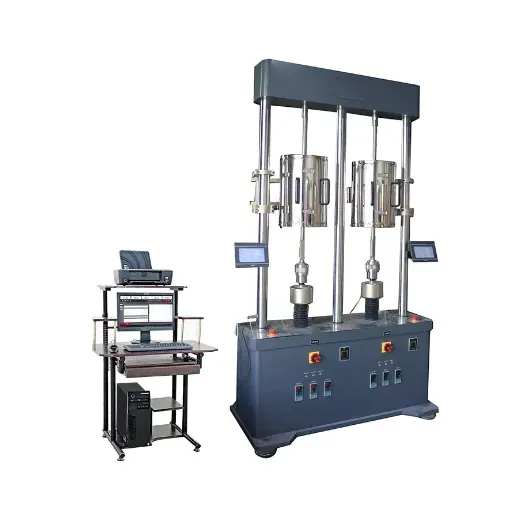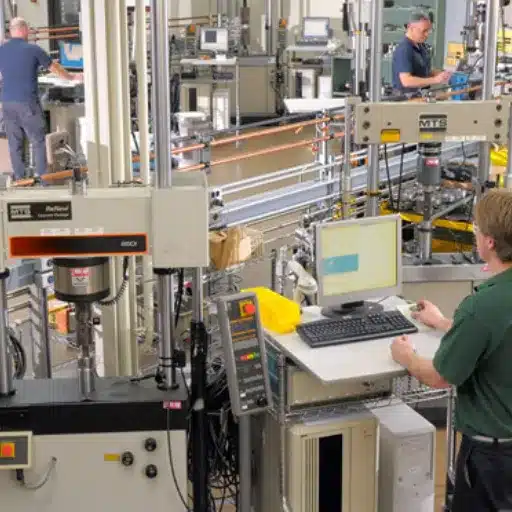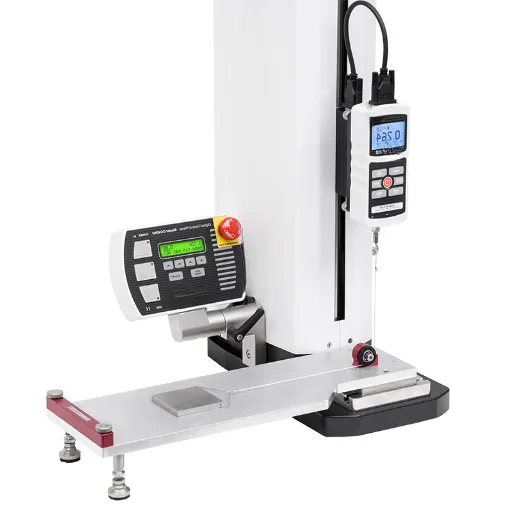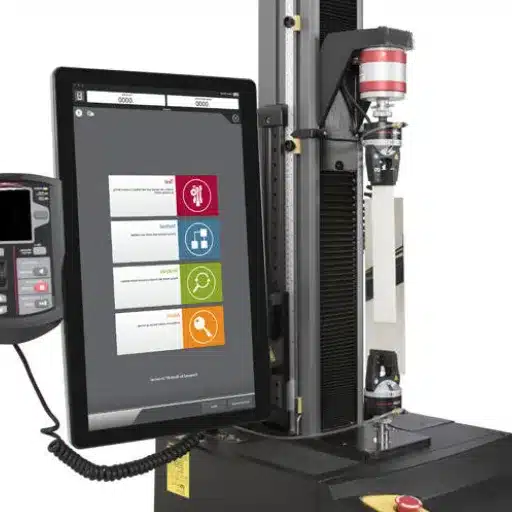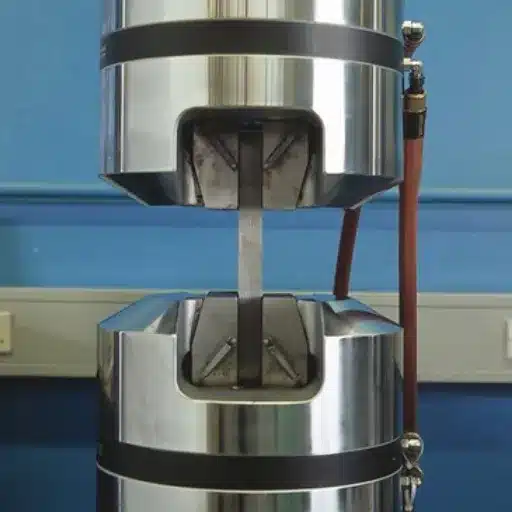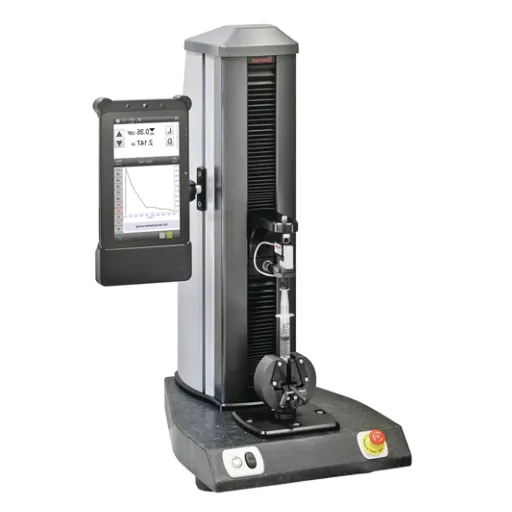The life in today is unimaginable without polymers. They find use everywhere, from everyday articles to high-end scientific developments. So, what makes them so versatile and dependable in any sort of condition? The answer is in two critical behaviors, creep and stress relaxation. Therefore, understanding the behaviors related to polymer performance and degradation over time is significant. This blog casts some light on the vivid, ever-changing relationship that exists between polymers and stress as they are put under loads for long intervals or loads that change with time. Whether your interest ranks with the material scientist or a professional wishing to learn a bit more, an insightful yet straightforward explanation of why these properties are important and how they are measured will surely be appreciated along with their real-world applications. Thus, whether you want to know about all the wonders surrounding polymers or what makes them so special in the arena of materials, continue reading.
Introduction to Creep and Stress Relaxation
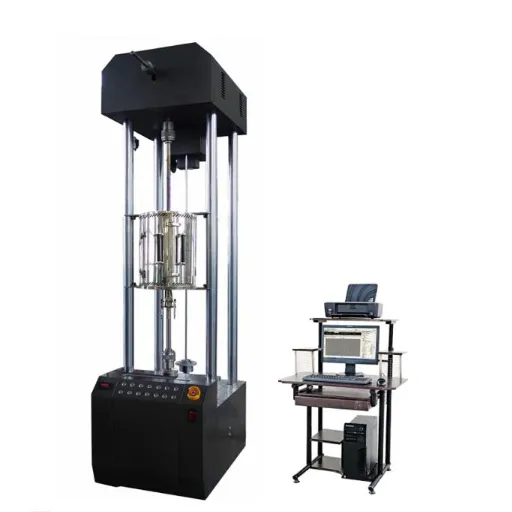
Defining Creep and Stress Relaxation
Creep and stress relaxation are two phenomena proved to be very important for materials under stress with respect to time, especially polymers. They must be considered for any design and material selection as they affect the performance of materials under prolonged application of loads or changing environments.
Creep occurs when a material is deformed slowly due to being placed under a constant load or stress over a lengthy period of time. Even when stresses applied lie below yield strength in the normal sense, creep will occur. Considering higher temperatures (relative to the melting point of the material), creep plays an enormous role in industries, such as aerospace, construction, and electronics, wherein materials are subjected to stress for a prolonged period of time.
On the other hand, stress relaxation is the gradual decrease in stress experienced in a material being held at a fixed strain. Consider the case of a stretched rubber band that is held at that fixed length; the force exerted (stress) will diminish with time, although there is no reversal in deformation. Such behavior plays a crucial role when the force has to be maintained in various applications, such as seals, gaskets, and elastic members. With an understanding of these phenomena, engineers can predict how materials behave and design safer and more reliable new products.
Importance of Studying Viscoelastic Properties
Studying the viscoelastic properties of materials provides a deeper knowledge of how materials respond to stress and strain, both instantaneously and over time. The defining characteristics of materials exhibiting viscoelasticity are that these materials react elastically or like solids while they deform; and behave viscously or like a liquid in some situations in others. In such a manner, engineers and scientists account for the varied circumstances of loading, temperature, and duration of use that a particular material might experience in its working environment.
Another important engineering application of viscoelasticity is for components that undergo long-term stresses, such as seals, gaskets, and implanted devices. Analysis of viscoelastic behavior allows engineers to ascertain whether these components can preserve their function and reliability over time. Thus, understanding creep and stress relaxation behavior of materials makes it possible to design products that do resist gradual deformation under critical conditions.
The other very important reason is to study viscoelastic properties towards furthering material innovation. Insights into viscoelastic behavior allow the tailoring of new materials for particular applications, ranging from shock absorbers to advanced prosthetics. Thereby, this knowledge allows for the design of safer and more durable products while also fostering sustainability in terms of reduced instances of material failure and waste.
Applications in Polymer Science
Due to the adaptable properties of these polymers and an economical method for their production, there are various applications for polymers. Packaging is a major one where polymers are used, especially polyethylene and polypropylene. Being light in weight and durable, along with moisture resistance, these polymers find potential for applications in the packaging of foods and in securing cargo during transportation.
An area equally important would be in biomedical engineering. Silicone, polyethylene, and related polymers find widespread use in medical devices, prosthetics, and drug delivery systems. That is because they are biocompatible and can be tailored for flexibility or mechanical strength, thus proving critical to the enhancement of medical outcomes and patient comfort.
Furthermore, polymers play an important part in construction and infrastructure. Durable and cost-efficient materials like PVC (polyvinyl chloride) are frequently used for piping, flooring, or insulation. By combining sustainability efforts with material development, polymers are continuously shaped to meet the ever-changing needs of modern industries.
Fundamentals of Creep Testing
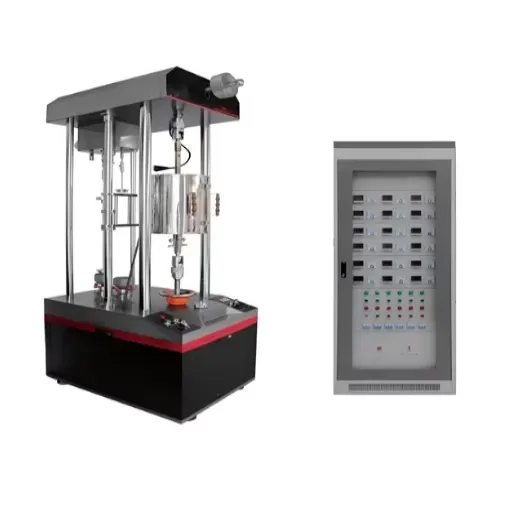
Mechanics of Creep in Materials
Creep is an increasingly slow deformation process in elements or materials under a permanent mechanical stress for a very long period. At high temperatures with regard to a material’s melting point, very appreciable creep phenomena can occur. Still, creep phenomena may also appear at low temperatures for certain materials. Thus, the main cause of creep is a slow motion of dislocations or deformation mechanisms in materials under stress.
The creep mechanism is governed by three stages:
- Primary Stage: The deformation rate decreases with time as the material adjusts to the stress applied
- Secondary Stage (Steady-state): The deformation rate is nearly constant and is usually treated as the most predictable stage of creep
- Tertiary Stage: The deformation rate becomes accelerated, which eventually results in failure through necking or cracking
An understanding of creep mechanics is important so that components can be designed in the aerospace, power generation, and construction industries. The engineers need to predict how the material will behave when subjected to long-term loading of certain magnitudes for prolonged periods to increase safety and reliability. By picking appropriate materials and designing accordingly, these risks of creep can be reduced, thereby increasing the service life of vital structures and components.
Factors Affecting Creep Behavior
There are considered some major factors influencing creep behavior, i.e., temperature, stress, and material properties. The high temperatures accelerate creep nearly in a sudden manner, as atoms of a material gain huge energy in order to diffuse or migrate with passing time. Therefore, wearing away by creep becomes a major bother for components working in high-heat environments, like turbines and engines. While the stress is considered large, it is going to bear considerably high deformation in creep.
The other set of players affecting creep resistance should be material composition and material structure. So, given the difference in their response to loading in perpetuity, metals, ceramics, and polymers epitomize these. Say, alloys with more melting points generally resist creep better since the breaking of atomic bonds requires much more energy. Likewise, the orientation and grain size of a crystalline material affect the deformation of the material under stress. The smaller grains will resist creep by limiting atomic motion.
Lastly, time variable in creep assessment is considered essential. The longer the time of exposure of the material to an environment maintained at constant stress and temperature, the more will be the deformation. Understanding the interplay between these factors is instructive for an engineer to predict creep behavior correctly and then guaranteeing safety in the applications where materials are subject to long-term thermal and mechanical stresses. Thereby, by means of optimized designing and proper selection of materials, one can definitely reduce the adverse effects of creep and so contribute to enhanced reliability and longevity of utmost importance.
Measurement Techniques for Creep
The slow deformation processes exhibited by a material under constant stress over time are considered creep; thus, creep is time-dependent deformation under constant stress, typically at elevated temperature. The characterizing phenomena of creep can very well be studied using creep tests. These are tests in which a sample is loaded with a constant load and at constant temperature within a controlled environment. Thus, deformation with time is recorded by means of an extensometer or strain gauges that measure elongation on the test specimen. Thus, in this test, the creep behavior of the material is described by a strain-time curve, and the material goes through different stages of creep: primary creep, secondary creep, and tertiary creep.
Another method very common is the stress-relaxation test. This test involves holding a specimen at a constant strain and measuring the decrease in stress with time. This method finds application in circumstances where a deformation or deflection is held steady, such as in pre-stressed components. Stress-relaxation tests complement creep tests in the study of material behavior so that engineers can extrapolate to long-time behavior.
An accelerated creep test is used mainly for small-scale tests or materials of limited practicality. To reduce the testing duration without compromising extrapolation accuracy, the test temperature and stress levels are raised. Data from accelerated tests are then used to estimate long-term creep behavior in models based on the Larson-Miller parameter. The combined application of these methods, along with a detailed study of the materials themselves, allows for accurate predictions of creep deformation and so increased assurance of materials for severe service.
Experimental Approaches to Testing
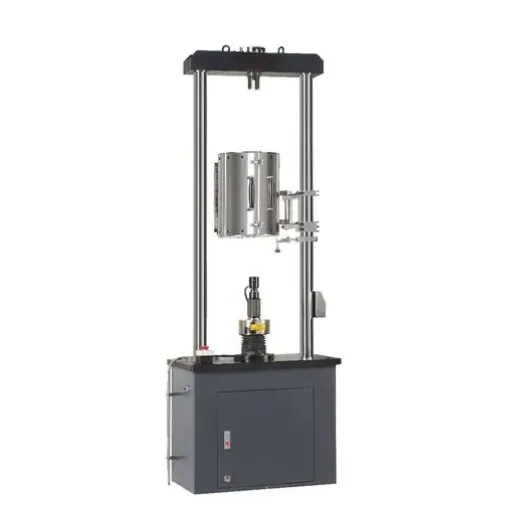
Designing a Stress Relaxation Experiment
Stress relaxation tests are instrumental in characterizing materials under a constant strain imposed for a time, usually while maintaining certain environmental conditions such as temperature and moisture. The typical experimental plan consists of selecting a sample of the material, which, in a sense, can be assumed to be a representation of the larger body of material under study. The sample is strained to a certain level and held there throughout the time period of interest. Simultaneously, the force required to maintain the given strain is measured.
The testing environment, most importantly temperature, must be controlled as closely as possible with respect to the actual temperature at which the material is expected to be applied. Typically, raised temperature may be adopted, for instance, in the case of materials that are expected to undergo some form of setting in a higher temperature environment. Modern tests usually allow for manual or automatic recording of stress reduction data with respect to time into the memory of the machine at predefined time intervals, thus providing accurate results.
Data analysis then interrogates a material’s stress-relaxation behavior, giving crucial insights into long-term performance and sustainability. Such information becomes even more significant luring scenarios for materials used in components that need to retain shape or structural integrity, such as seals, joints, or fasteners. Hence, through this approach, materials would be deemed suitable for commercial purposes under test-like operational conditions.
Measurement of Deformation during Testing
Various instruments measure deformation during testing to determine the changes in dimension or shape of a material under stress. Other methods include laser systematic scanning and DIC. All these forms of measurements are reliable and accurate, hence provide depended data for the behavior of the material under given conditions.
Common Measurement Methods:
- Extensometers: Attach to the material while under stress, measuring elongation or compression directly
- Strain Gauges: Measure deformation by registering changes in electrical resistance corresponding to material strain
- DIC and Laser-based Methods: Contactless testing methods using high-resolution cameras or lasers to track surface movement
Understanding the most appropriate measurement methods gives proper insight into material behavior for performance evaluation and quality assurance, respectively.
Instrumentation and Equipment for Accurate Measurements
Being creep and stress relaxation testing, instrumentation has to be exact for their results to be trustworthy. These tests tend to see how a material is deformed under a sustained load or a certain stress over time. Such tests demand equipment that can maintain either a constant force or a constant strain with great accuracy while simultaneously measuring the change in dimensions of the given sample under test.
Generally, for creep, the systems have a load frame to apply constant force and an extensometer or some displacement-measuring device to record how much the material elongates with time. It needs to operate at constant environmental conditions since any temperature change can seriously alter the test results. Environmental chambers are then often used for conditioning temperature and humidity to remain constant throughout the testing procedure.
In the other type of testing, stress relaxation testing enforces a constant strain while measuring the decrease in stress as time passes. Data acquisition systems are a must in the accurate capture of stress responses. The system records the force changes in real-time, providing data about the time-dependent properties of the material being tested. Both types of tests require a system that has high sensitivity and stability in order to perform the tests accurately.
Case Studies and Real-World Applications
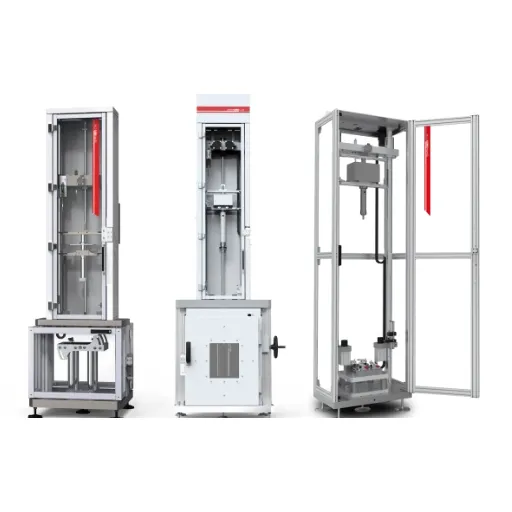
Creep and Stress Relaxation in Composite Materials
Creep and stress relaxation phenomena form the second pair without which there can hardly be a comprehension of the long-term behavior of composite materials. Creep particularly means the materials getting strain with respect to time under more or less constant stresses acting upon it; stress relaxation means the internal stresses in a material relaxing while the specimen is held in a state of constant strain. Both are time-dependent phenomena dependent upon temperature and the degree of stresses, and also upon the kind of composite materials involved. It must be an engineer’s concern to understand these behaviors to design components that can survive for a long time when subjected to long-term loadings.
In principle, different grades of composite systems are very much affected by these phenomena because of their heterogeneous microstructure. In general, due to the viscoelasticity of the matrix, the pure creep and relaxation phenomena occur for long periods. Reinforcing fibers would in fact oppose such phenomena to a certain extent, as do their orientation, bonding, and environment (such as humidity and temperature variations).
Creep and stress-relaxation tests and analyses are all about providing an accurate prediction of the time for which a composite material can really be in service. The standardized long-term loading tests are designed to measure such phenomena and evidence the risk factors, if any, under long-term usage. Numerical modeling along with practical testing is the basis upon which design upgrades are prepared, along with better formulations of materials, in order to develop materials capable of hard duties in diverse industries like aerospace and automotive.
Polymer Applications in Engineering and Manufacturing
Due to their superb qualities and versatility, polymers are important in engineering and manufacturing. They are lightweight materials that provide a level of durability against abrasion and corrosion that finds many industrial uses. Polymers could be configured for some performance-type of flexibility and resistance to mechanical impact to allow polymer innovation in various industries.
Key Industry Applications:
- Aerospace & Automotive: Weight reduction and fuel efficiency enhancement without compromising strength
- Manufacturing: Industrial-grade seals, 3D printing prototypes, electrical insulation
- Medical Devices: Protective coatings, biocompatible components
Polymers are indeed the most sought materials for manufacturing processes and in common usage. From the creation of industrial-grade high-performance seals to the prototyping of designs through 3D printing, polymers are the most flexible materials in contemporary manufacturing. With such numerous applications, they prove essential for the advancements in technology.
Insights from Rheology in Material Testing
Rheology, the study of the flow and deformation of materials, provides critical insights into the behavior of polymers during processing and application. By analyzing how polymers respond under stress, temperature, and strain, rheological testing helps determine their viscosity, elasticity, and other mechanical properties. These insights are essential for predicting material performance and ensuring consistency in manufacturing processes.
One key area where rheology proves invaluable is in quality control. Manufacturers use rheological measurements to monitor material consistency and detect variations in polymer formulations. For instance, measuring the viscosity of a polymer melt can reveal whether it will flow appropriately through molds or extrusion systems, ensuring efficient production and defect-free products.
Additionally, rheology supports the development of new materials by providing data that helps engineers optimize polymer formulations. By understanding how polymers behave under different conditions, researchers can design materials tailored for specific applications, such as high-strength medical devices or heat-resistant coatings. Rheology thus bridges the gap between material science and practical application, contributing to advancements across a broad range of industries.
Advancements in Testing Methodologies
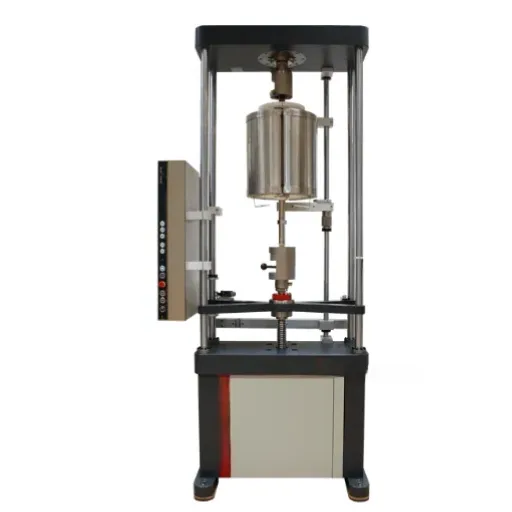
Innovations in Equipment Design
Improvements in equipment design have contributed to better accuracy and efficiency in creep and stress relaxation testing. Modern testing instruments ca n maintain accurate controls over environmental conditions such as temperature and humidity so that testing may be precise and all conditions may remain the same. The design allows for a closer simulation of real-world conditions, which enables better data relevance and utility.
The sensors have allowed the interface between testing and data capture to be integrated digitally and now provide for excellent data collection and analysis during the test. High-resolution sensors ensure a near-deformation measurement of the material through time, while the integrated software gives the possibility of easy interpretation of data, so that a researcher or engineer may quickly conclude as to the result of the material performance and whether it is worth application in an actual case.
Simultaneous testing of multiple material properties is enabled by multi-functional testing equipment. These innovations save time and resources by performing creep and stress relaxation tests alongside others such as tensile or fatigue testing. This allows for the quicker development of materials for industries where precision and reliability matter-the aerospace, automotive, and healthcare industries.
Improving Accuracy and Efficiency in Testing
The creep and stress relaxation tests are one of the methods for elucidating material behavior when subjected to long-term stresses or strains. They give us important information on the long-term stability of the material, so its application can be ensured in an area where it needs to be reliably used. Deformation occurring within the testing material for long periods while being kept at constant stress and temperature is creep testing. Stress relaxation occurs in the testing material while internal stresses diminish under a fixed strain. They, together, render a base for performing analysis toward real-life application.
The enhancement of test accuracy calls for the precise control of environmental conditions like temperature and the applied forces. The top-of-the-line testing equipment can stabilize and maintain consistent conditions, further increasing the certainty of the results. In addition to this, automation of data collection reduces human error, thus allowing for consistent monitoring and testing of results. And by incorporating real-time data acquisition systems, the time duration of tests can be the most optimized whilst still guaranteeing accurate measurement.
The equipment used for creep and stress relaxation testing is equipped with functions to perform multiple tests in an integrated manner. Integration saves valuable time and resources by eliminating the need to carry out separate procedures for separate testing requirements. Furthermore, newer software analytic tools enable the double-interpretation of the complex data to give valuable conclusions in a much faster retrieval time. Such improvements help industries in developing safer and better-performing materials with precious time. These industries include aerospace, automotive, and healthcare.
Future Trends in Creep and Stress Relaxation Testing
Creep and stress relaxation testing is witnessing a tide of automation and digitalization. Automated testing systems are emerging, capable of long-term and high-precision measurements without anyone needing to keep watch over them. Having such mechanisms reduces the opportunity for error and lowers labor costs, contributing to more efficient resource allocation for testing. The entry of artificial intelligence within testing systems brings about augmented predictive capabilities, whereby it can predict how a material would behave when subjected to prolonged stress or high temperatures.
Emerging Trends:
- Automation & AI: Reduced human error and enhanced predictive capabilities
- Advanced Simulation: FEA and computational technologies for accurate modeling
- Sustainability Focus: Waste minimizing and energy conserving methods
Finally, in creep and stress relaxation testing, the spotlight is shifting toward sustainability. Thus, waste minimizing and energy conserving methods align with global efforts directed toward reducing the environmental impact of industrial processes. And more durable testing systems with reusable parts, altogether helping to lessen the environmental costs of test operations, represent such a trend. Hence, all these trends reflect the increased emphasis on efficiency, accuracy, and environmental concern in the abilities of testing methodologies to evolve.
Frequently Asked Questions (FAQ)
Q: What is creep and stress relaxation testing?
The process of creep and stress relaxation testing is a technique related to how the materials change shape when stretched in time-dependent behavior. It essentially measures the resulting strain in materials, most importantly polymers, under an applied stress or strain rate to come to a conclusion about their behaviors under different loading conditions.
Q: How is the test actually done?
The constant load is kept on the sample while displacement and strain are used to produce variation in a given variable length at a constant temperature, ultimately analyzing the strain exhibited with time to explain the creep rate and relaxation modulus of the specimen during the test.
Q: What are the differences between stress relaxation and creep?
Stress relaxation is a drop in stress provided by the specimen with increasing time while maintaining a constant strain; creep refers to the slow increase of strain under constant stress. For polymers and other plastic materials, it is essential to understand the relation of stress relaxation with the creep process.
Q: What effects can temperature have on creep and stress relaxation testing?
Temperature, particularly about the glass transition temperature of polymers, plays a significant role in governing the behavioral changes of the material under test. By applying time-temperature superposition, researchers may normalize their results to establish the relation of temperature vis-a-vis creep or stress relaxation properties of the material.
Q: What effects does molecular weight have on creep behavior?
Depending on the molecular weight of a polymer, its creep behavior will change. Higher molecular weight polymers tend to exhibit lower rates of creep due to higher levels of chain entanglement, thus impeding deformation when stress is applied.
Q: What kinds of measurement instruments are employed in creep & stress relaxation testing?
Various instruments can be used performing creep & stress relaxation testing, one example being the dynamic mechanical analyzer (DMA). The measurement instruments precisely record the relaxation modulus and various other mechanical characteristics exhibited by the material under an applied load and temperature.
Q: How do fillers influence the creep behavior of polymers?
Inclusion of fillers can markedly affect the creep behavior of polymers. Fillers reinforce and toughen the polymer matrix and reduce the creep rate by stiffening the composite to better sustain structural loads.
Q: What relevance does the compliance have in creep testing?
Compliance measures the extent of deformation of a material under an applied stress. In creep testing, it is crucial since it facilitates the description of the stress-strain-time relationship governing the viscous response of materials during stress relaxation and creep phenomena.
Q: Is it possible to use finite element analysis in creep/relaxation testing?
Yes, finite element analysis (FEA) may be applied in order to simulate and predict the creep and stress relaxation of materials under all manner of loading. This computational technique enables a very detailed modeling of material behavior, thereby enhancing comprehension of their mechanical properties in practical situations.
References
- Creep and Stress-Relaxation Test – Explains how creep and stress-relaxation tests measure material deformation over time.
- Creep and Stress Relaxation – Discusses methods and tools, such as relaxation cells, used in stress relaxation testing.
- Stress-Relaxation Testing – Provides insights into stress-relaxation testing and its relationship with creep recovery.
- Properties of Polymers – Creep and Stress Relaxation Analysis – Focuses on creep and stress relaxation in polymers and their impact on product functionality.

